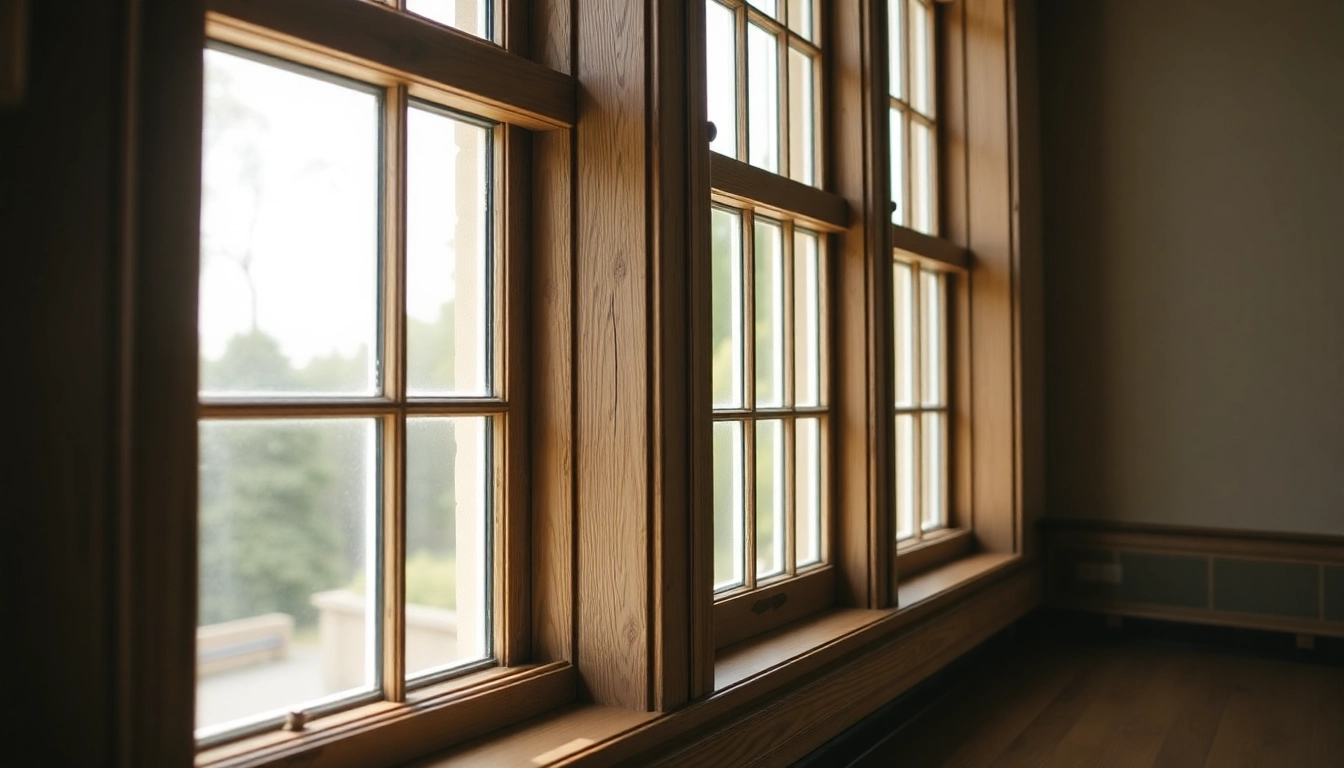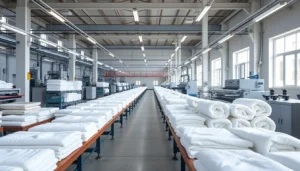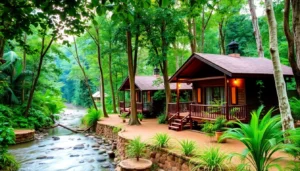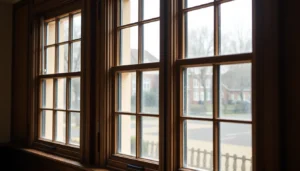Understanding the Value of Bespoke Sash Windows
When it comes to enhancing the aesthetic appeal and functional performance of your property, few features make as timeless an impact as bespoke sash windows. These meticulously crafted windows not only preserve the architectural integrity of heritage buildings but also provide modern comfort and efficiency for contemporary homes. Whether restoring a historic façade or adding character to a modern apartment, bespoke sash windows serve as a testament to craftsmanship and customization. Their unique ability to seamlessly blend tradition with innovation makes them a highly sought-after choice for homeowners, developers, and architects seeking to infuse authenticity into their projects.
Historically, sash windows have played a pivotal role in British architecture, symbolizing elegance and functionality. Today, modern advancements have allowed these traditional designs to incorporate energy-efficient features, low maintenance materials, and bespoke detailing tailored to individual preferences. This chapter explores the profound historical significance of sash windows and how bespoke versions uphold architectural integrity while meeting contemporary needs.
Historical Significance and Architectural Integrity
Originating in 17th-century England, sash windows became emblematic of British design, especially during the Georgian and Victorian eras. Crafted primarily from timber, these windows featured vertically sliding sashes that allowed for ventilation while preserving the building’s aesthetic. Their design offered both practical functionality and decorative versatility, often distinguished by intricate glazing bars and detailed frames.
Preserving the authenticity of historical buildings requires more than mere replication; it demands bespoke craftsmanship that respects original features while integrating modern performance standards. Custom-made sash windows serve this purpose perfectly by matching historical profiles, proportions, and decorative elements. This ensures that restoration projects retain their authentic character, which significantly contributes to the property’s value and historical significance.
Research indicates that properties with authentic sash windows command higher market values, owing to their desirability and aesthetic appeal. Furthermore, original sash windows are an integral part of heritage conservation, helping maintain an area’s architectural fabric and cultural identity. When designed and installed correctly, bespoke sash windows can improve thermal performance without detracting from the historical appearance, emphasizing that preservation and modernity can coexist beautifully.
Benefits of Customization and Tailored Fit
The primary advantage of opting for bespoke sash windows lies in their ability to be fully customized to meet specific requirements, be it style, size, or functionality. Unlike mass-produced alternatives, bespoke windows are manufactured to fit precisely within existing openings, ensuring seamless integration regardless of irregularities in the building structure.
Custom fit ensures optimal insulation by preventing drafts, reducing energy costs, and enhancing comfort. Tailoring extends to choosing specific materials, finishes, and hardware to match or complement the property’s architecture and interior design. For example, a period property might benefit from traditional painted timber with period-appropriate hardware, while a modern aesthetic could incorporate sleek aluminum or uPVC frames with contemporary finishes.
Another significant benefit is the flexibility to select unique shapes, sizes, and configurations, including arched, bay, or asymmetric styles, which are often unachievable with standard window sizes. This level of customization facilitates creative architectural expressions and allows homeowners to personalize their space to reflect their unique taste and requirements.
Moreover, bespoke sash windows often include advanced features like double glazing, integral security systems, and low-maintenance finishes, all tailored precisely to client preferences. This comprehensive approach ensures that the windows not only look exceptional but also perform optimally and remain durable over time.
How Bespoke Sash Windows Enhance Property Value
Investing in bespoke sash windows contributes significantly to property value, especially in the context of restoration projects, interior upgrades, or heritage property maintenance. These windows are viewed as high-quality, bespoke features that enhance curb appeal, architectural authenticity, and overall aesthetic cohesion.
Real estate studies reveal that period properties equipped with restored or newly installed bespoke sash windows tend to fetch higher prices and attract discerning buyers seeking authenticity and craftsmanship. Additionally, energy-efficient double-glazed sash windows can substantially reduce heating costs, making the property more attractive from an operational standpoint.
Furthermore, bespoke sash windows often meet stringent planning and conservation requirements, streamlining approval processes for renovation projects. Their ability to seamlessly blend historic charm with modern performance often translates into increased marketability and long-term property appreciation.
In the commercial sector, bespoke sash windows can elevate the prestige and authenticity of historic hotels, boutique stores, and office buildings. Ultimately, these windows are not merely functional elements but strategic investments that contribute to the property’s overall value, appeal, and sustainability.
Design Options and Materials for Bespoke Sash Windows
Traditional Timber vs. uPVC and Aluminium Frames
The choice of material is fundamental in defining both the aesthetic and performance qualities of bespoke sash windows. Traditional timber remains the gold standard for authenticity, offering natural beauty, excellent insulative properties, and the ability to be finely detailed and painted in custom colors. Timber also ages beautifully, developing a patina that enhances its charm over time. However, it requires regular maintenance to preserve its integrity and appearance.
Modern materials like uPVC and aluminium offer compelling advantages. uPVC sash windows are low-maintenance, highly resistant to weathering, and energy-efficient due to advanced double-glazing options. Their cost-effectiveness makes them attractive for large-scale projects or where minimal upkeep is desired.
Aluminium frames combine lightweight durability with sleek, modern aesthetics. They are highly resistant to corrosion and can be finished in virtually any color or texture. Aluminium sash windows are ideal for contemporary buildings seeking a minimalist look with high performance.
Each material choice entails trade-offs between authenticity, maintenance, thermal performance, and cost. An expert assessment can help determine the best fit based on project specifics and long-term investment goals.
Choosing Finishes, Glazing, and Hardware
Finishes influence not only aesthetics but also durability and maintenance requirements. Traditional options include painted or stained timber finishes, which can be customized in an extensive palette. Modern finishes like foil wraps or powder coatings are available for uPVC or aluminium frames, providing a wide array of colors with enhanced weather resistance.
Glazing options significantly impact energy efficiency and noise reduction. Double glazing with low-emissivity coatings, argon or krypton gas fills, and specialized acoustic glass can all be specified within a bespoke design to meet specific performance targets.
Hardware—handles, locks, lifts, and stays—also plays a vital role. Custom hardware can be selected to match historical styles, such as decorative Victorian handles, or to offer contemporary functions, like keyless locking systems. Metal finishes can be polished brass, chrome, satin nickel, or aged bronze, contributing to both security and aesthetic harmony.
A comprehensive customization process involves selecting high-quality hardware and finishes that complement the overall design theme, ensuring cohesion and longevity.
Custom Shapes, Sizes, and Colors to Match Your Property
One of the defining features of bespoke sash windows is their flexibility in design. From traditional rectangular units to arched, bay, or asymmetric configurations, the possibilities are virtually limitless. Custom shapes can help ensure that the windows match and accentuate unique architectural features, preserving the property’s original character.
Size customization allows for precise fitting, especially important for restoration projects or extensions where standard sizes may not suffice. This level of precision reduces installation time and minimizes disruption.
Color customization enables seamless integration with existing color schemes, heritage palettes, or modern tones. Timeless color options like heritage greens, classic whites, or deep blacks can be specified for timber frames, while vibrant or muted tones are available for modern materials.
Collaborating with experienced manufacturers ensures that bespoke features are executed flawlessly, resulting in windows that are harmonious with the overall building design and personal taste.
Installation, Maintenance, and Durability
Expert Fitting to Maximize Performance and Aesthetics
Proper installation is crucial to realize the full potential of bespoke sash windows. Skilled craftsmen ensure accurate measurements, precise fitting, and adjustments to achieve perfect alignment and smooth operation. This attention to detail prevents drafts, leaks, and operational issues while enhancing aesthetic appeal.
Professional fitting also ensures compliance with building regulations and conservation standards, safeguarding the property’s heritage value. An experienced installer assesses the condition of existing window openings and prepares the substrate for optimal adhesion and stability.
Care Tips for Longevity and Preservation of Wooden Frames
Timber sash windows require regular maintenance to preserve their appearance and functionality. Periodic repainting or re-staining protects against weathering, moisture ingress, and pests. The use of high-quality, breathable paints or sealants is recommended to prevent trapped moisture, which can cause timber decay.
Cleaning with gentle, non-abrasive products helps maintain hardware and finishes, while occasional lubrication of moving parts ensures smooth operation.
Addressing minor issues promptly—such as repairing peeling paint or replacing deteriorated hardware—prevents further damage and extends the lifespan of the windows.
Modern Enhancements: Double Glazing and Energy Efficiency
Modern bespoke sash windows incorporate double or even triple glazing, significantly enhancing thermal insulation and soundproofing. The installation of high-performance glazing units within traditional frames balances authenticity with energy efficiency, reducing heating bills and increasing comfort.
Additional features include low-emissivity coatings that reflect heat back into the room, thermal break designs that eliminate cold bridges, and Low-E glass for UV protection. These enhancements contribute to Green Building standards and can qualify for green incentives or subsidies.
Careful engineering and expert installation are vital to ensure these modern features integrate seamlessly within bespoke designs, maintaining the aesthetic while optimizing performance.
Cost, Ordering Process, and Timelines
Factors Influencing Bespoke Sash Window Pricing
The cost of bespoke sash windows varies depending on several critical factors. Material choice significantly impacts price: timber frames tend to be more expensive than uPVC or aluminium. Complexity of design, including custom shapes or decorative glazing bars, adds to the overall cost.
Size and number of windows, hardware specifications, and additional features like double glazing or special finishes also influence pricing. For restoration projects, the degree of repair or conservation required may affect costs, especially if bespoke detailing or historic accuracy is necessary.
Other considerations include the level of automation or security features, lead times, and the reputation of the manufacturer. A detailed quotation process allows for transparency and ensures that clients understand the full scope and costs involved.
Step-by-Step Custom Design and Ordering Procedures
The bespoke sash windows ordering process begins with initial consultation, where specifications, style preferences, and performance requirements are discussed. Clients can work with manufacturers through an interactive design tool, like the online designer, to visualize and customize their options.
Once design choices are finalized, a detailed quotation and production timeline are provided. The manufacturing process typically involves precision craftsmanship, quality control, and testing before dispatch.
Installation scheduling is coordinated to minimize disruption, and professional fitters ensure a seamless process. Post-installation, clients receive maintenance advice and warranties to safeguard their investment.
Lead Times and Installation Scheduling
Bespoke sash windows generally require a lead time of 6 to 12 weeks, depending on complexity, material availability, and manufacturing workload. Early planning is recommended for restoration projects or scheduled renovations.
Once ready, professional installers conduct the fitting with precision, ensuring proper operation and weather-tightness. Scheduling flexibility and clear communication are vital to accommodate project timelines and ensure customer satisfaction.
Choosing the Right Supplier for Your Bespoke Sash Windows
Qualities of a Reputable Craftsmanship and Service
Selecting a reputable supplier is critical to achieving high-quality bespoke sash windows. Authenticity, craftsmanship, transparency, and customer service are key indicators of a trustworthy provider. Experience in heritage restoration, certification standards, and comprehensive warranties reflect commitment to quality.
Reputable suppliers often showcase extensive project portfolios, testimonials, and detailed consultations, enabling clients to assess their suitability for specific needs. Certifications such as FENSA, CERTASS, or heritage accreditation further validate their expertise and quality assurance.
Customer Testimonials and Project Portfolios
Reviewing customer testimonials provides insight into the supplier’s reliability, quality, and after-sales support. A diverse portfolio demonstrating various styles, materials, and complexities confirms their versatility and experience.
Case studies highlighting successful restorations, bespoke designs, and innovative features serve as valuable references for prospective clients. Visual evidence, including before and after images, illustrates craftsmanship and attention to detail.
Ensuring Quality Assurance and Certification Standards
Quality assurance involves rigorous manufacturing standards, quality control processes, and adherence to building and conservation regulations. Certifications such as FENSA or insurance-backed guarantees provide reassurance of compliance and durability.
Clients should verify the supplier’s commitment to sustainable sourcing, environmentally friendly practices, and longevity. An emphasis on craftsmanship, transparency, and ongoing support distinguishes leading providers in the bespoke sash window industry.




















